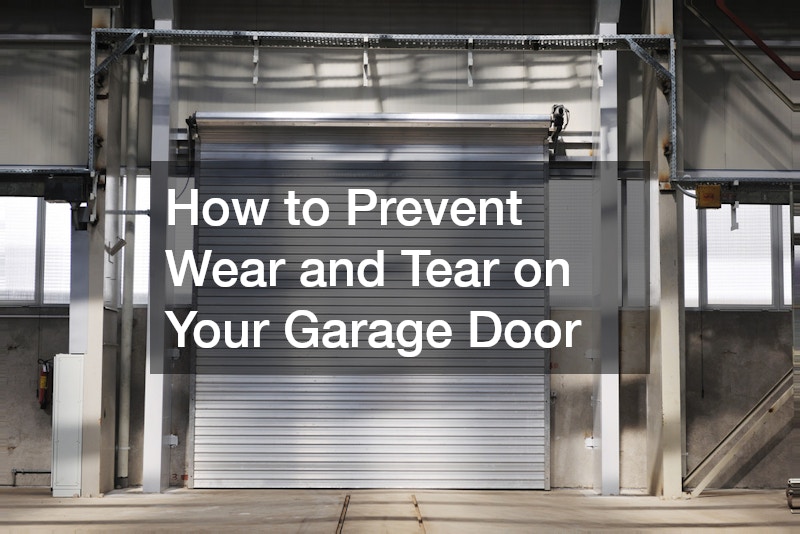In this article, we will explore essential tips and best practices for maintaining your garage door to prevent wear and tear. A well-maintained garage door not only lasts longer but also enhances the overall appeal of your home.
What are the common causes of wear and tear on garage doors?
Understanding the factors that contribute to wear and tear can help you mitigate them effectively. Garage doors experience daily use, leading to gradual deterioration of components over time.
Common causes include exposure to the elements, mechanical strain, and lack of lubrication, each of which can significantly impact the door’s lifespan. Regular maintenance and timely inspections can help identify early signs of wear before they become major problems.
Weather conditions play a significant role in the wear and tear of garage doors. Extreme temperatures, moisture, and harsh UV rays can lead to rust on metal doors or warping in wooden doors. Additionally, grime, dust, and debris accumulate over time, hindering the door’s mechanisms and preventing it from functioning smoothly, which can exacerbate these issues. Seasonal changes can also affect door performance, making routine checks essential.
Furthermore, physical factors such as frequent use and improper operation can lead to premature wear sometimes. Slamming the door shut, forcing it open manually, or failing to operate it correctly can cause stress on the springs, rollers, and tracks, leading to misalignment and other functional problems. Proper handling, combined with professional servicing when needed, can significantly extend the life of your garage door and ensure consistent, safe operation.
How often should you perform maintenance on your garage door?
Regular maintenance is definitely key. Here, we will discuss the recommended schedule for inspections and upkeep. It’s commonly suggested that homeowners perform a basic inspection and maintenance routine on their garage doors at least once every three months. This frequency allows you to catch any early signs of wear before they escalate into bigger problems.
During regular maintenance, inspect the door’s components, including the springs, rollers, and tracks, to ensure they are functioning correctly. Look for any signs of rust, wear, or misalignment. Keeping a close eye on these components helps ensure that your garage door remains reliable and safe to use.
In addition to quarterly checks, consider conducting a more thorough annual inspection, which involves checking the balance of the door, testing the auto-reverse function, and examining the safety features. Ensuring that the door is in proper working order not only extends its lifespan but also enhances safety for your household.
What are the best practices for lubricating garage door components?
Proper lubrication is crucial for smooth operation. This section will cover the appropriate products and techniques. Lubricating the moving parts of your garage door is a straightforward yet vital part of maintenance. The best practices involve using a silicone-based lubricant or a specific garage door lubricant and avoiding oil-based products that can attract dust and grime.
Focus on key components such as the rollers, hinges, and tracks. Apply lubricant to these areas, ensuring that it penetrates into the mechanisms while avoiding over-application, which can lead to drips and mess. Be sure to wipe off any excess lubricant to prevent it from attracting dirt.
Additionally, it’s important to perform lubrication during your regular maintenance checks, as well as anytime you notice that the door is operating noisily or feels stiff. Proper lubrication reduces friction and wear, greatly extending the life of your garage door components and ensuring quiet and efficient operation.
When should you consider professional garage door maintenance?
Some issues require expert attention, and that’s ok. Luckily, this section will help you identify when to call a professional for maintenance. While routine maintenance can be performed by homeowners, certain signs indicate that it’s time to seek professional help. For instance, if you notice anything unusual such as excessive noise, difficulty in opening or closing the door, or visible signs of damage, it’s advisable to consult a professional.
Additionally, if your garage door has not been serviced in several years, or if you are unsure about how to address specific issues, don’t hesitate to reach out to a qualified technician. They can conduct a comprehensive inspection, diagnosing problems that may not be immediately obvious and providing necessary repairs.
In some cases, especially regarding electrical components or complex mechanisms, it’s best to leave repairs to the professionals. They have the expertise and tools required to safely address these issues and ensure your garage door’s proper functioning, minimizing the risk of further damage or injury.
By understanding the causes of wear and tear, maintaining a regular upkeep schedule, lubricating components effectively, and knowing when to seek professional help, you can significantly extend the life of your garage door. A proactive approach to maintenance ensures that your garage door remains not just functional, but also a valuable part of your home’s exterior.
